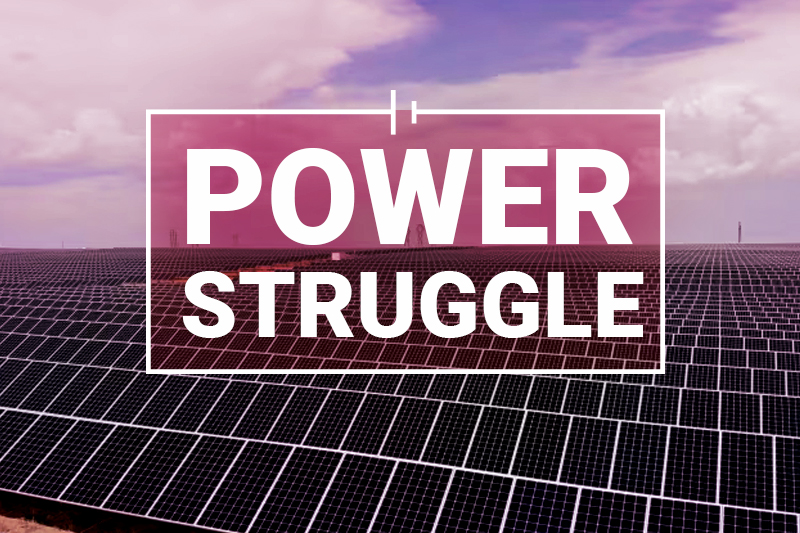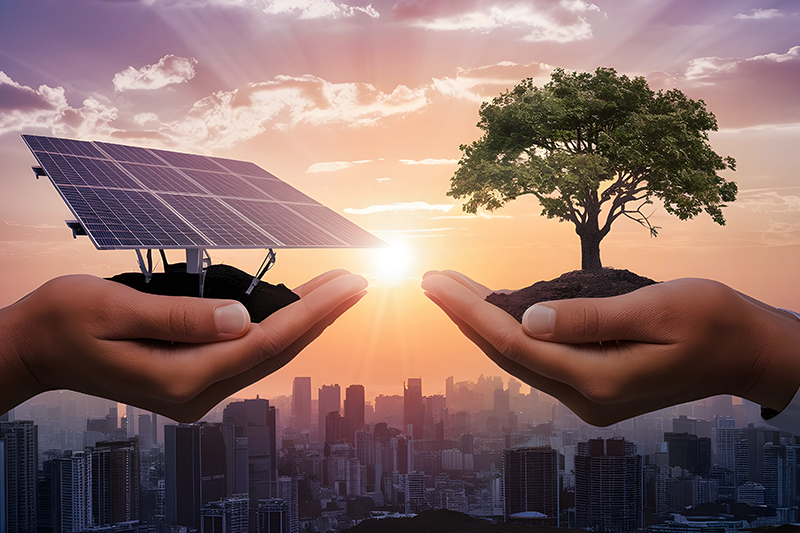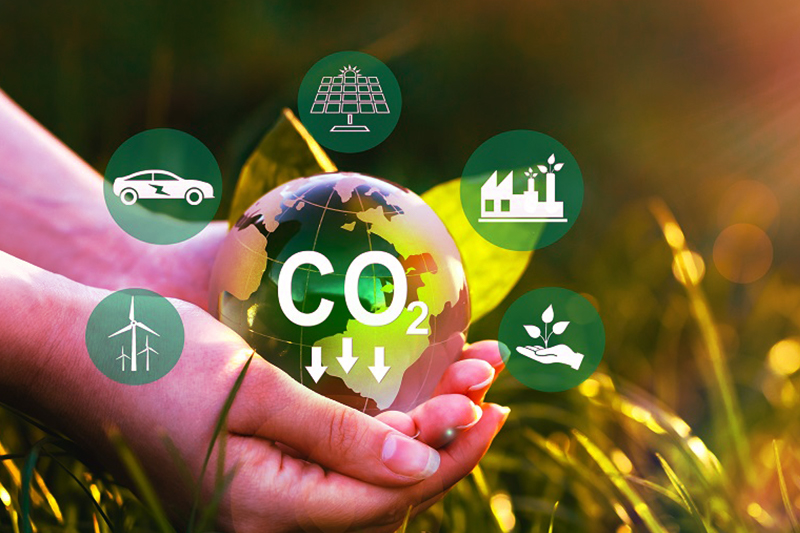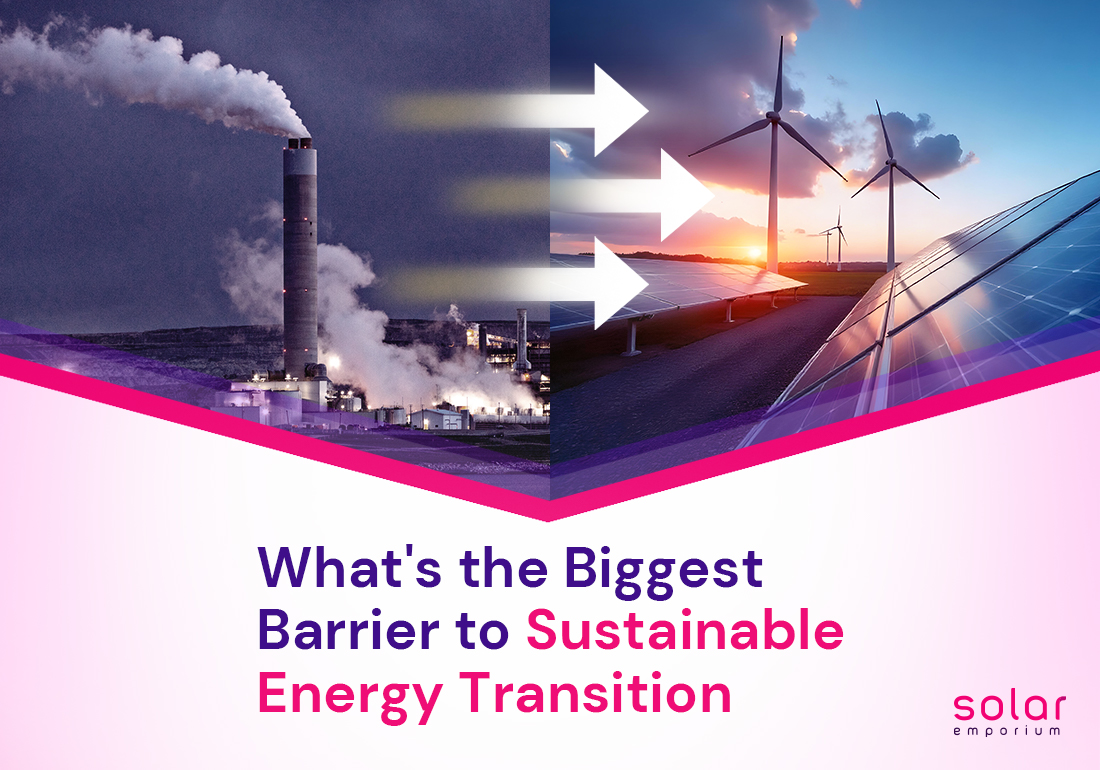Instead of being tapped into a reality dominated by harmful fossil fuels, imagine a world where we could power our homes, cars, and industries while causing minimal harm to the planet.
Well, with the sustainable energy transition, that’s not just wishful thinking anymore. Australians are now embracing renewable sources to discover new pathways that benefit the planet while enhancing the well-being of communities.
However, every promising prospect unfortunately comes with barriers that prevent the widespread adoption of these environmentally friendly, sustainable power sources.
So, what is the biggest barrier to sustainable energy transition?
The Clean Energy Shift: What Is Sustainable Energy Transition?
The transition from fossil fuel-based energy systems to eco-friendly and renewable energy sources is called sustainable energy transition.
Sustainable Energy production uses natural sources such as the sun, wind, and water to generate power. That’s why this energy transition is also termed as renewable energy transition.
Solar power, hydroelectricity, biomass, geothermal, wind, wave, and tidal are all renewable energy sources. Moreover, these energy sources can be replenished faster than they are consumed.
They are abundant in nature and cause zero to minimal environmental damage, thus ensuring a green, healthy life for all individuals.
Does Transition to Sustainable Energy Necessary in Australia?
Yes, a transition to sustainable energy becomes necessary whether you are residing in Australia or any part of the globe.
But why should the world shift to renewable energy resources?
As the planet grapples with climate change’s impact, clean energy sources help shape our world differently while reducing our greenhouse gas emissions. They slow global warming and help mitigate its detrimental effects on the environment.
With the rapidly growing population, maintaining consistency in the energy demand and supply is a new challenge.
In many parts of the world, people ultimately depend on burning fossil fuels to fulfill their energy needs, which is one of the major contributors to global warming emissions.
Similarly, Australia’s energy system also relies heavily on fossil fuels. Despite having abundant sunlight and vast open landscapes, almost 70% of the country’s energy still comes from burning traditional, non-renewable sources such as coal and natural gas.
However, the good news is that the Australian government is taking several initiatives to change the country’s energy landscape.
They offer various incentives, rebates, tax credits, feed-in tariff programs, and other monetary benefits to encourage clean energy production.
The government’s ultimate aim through these empowering home programs is to achieve net-zero emissions by 2050 and reduce dependency on fossil fuels.
In essence, switching to renewable energy is not only about saving the planet from melting ice caps and reducing emissions; it’s also about protecting your health and building a sustainable future.
Remember that sources such as wind or sunlight are unlimited and will continue to power our homes even after the last coal mines are depleted.

Power Struggle: What is The Biggest Barrier to Sustainable Energy Transition?
The majority of Australians are aware of the potential that sustainable energy holds. Investing in sustainable practices and adopting renewable sources makes it possible to create a more stable, equitable, and healthy future for everyone.
Then what stops the transition away from fossil fuels?
Transitioning to sustainable energy sources, such as installing solar panels or wind farms, requires high upfront costs. So, cost is one of the most common and widely applicable obstacles to giving up fossil fuels.
Rising component prices, operational costs, and other associated expenses might discourage people with low budgets from using renewable energy.
Even today, Australia is known as the biggest exporter of fossil fuels. So, shifting from the existing traditional coal-fired power plants and their established fossil fuel market is a hard nut to crack.
However, a combination of technical, societal, political, economic, and environmental barriers can also inhibit the energy-shifting process.
Egar to know them all?
So, without any further ado, let’s directly hover to the next segment!
Shining Light On the Other Challenges to Clean Energy Transition

Here are some of the major factors hindering the sustainable energy transition:
Limitation Issues with Infrastructure
Sustainable Energy Transition requires the use of significant amounts of land. Renewable energy technologies, such as wind turbines, hydropower plants, and solar farms, cannot be tucked into small spaces.
Large-scale renewable projects require more space for energy infrastructure than traditional power plants. This increases the overall maintenance cost to achieve better energy efficiency.
Economic Constraints
Even though embracing sustainable energy sources is the main key to creating a balanced and equitable world, the path has numerous economic barriers that often stop people from taking the leap.
Suppose the initial capital cost, modification or upgrade charges, and the hefty price tag of the advanced materials compared to fossil fuels pose affordability challenges for many.
This price issue decreases the widespread adoption rate of sustainable energy sources and makes fossil fuels the ultimate option in the Australian energy market.
Technical Barriers
While renewable energy technology has advanced rapidly, the associated technical issues can significantly hamper the energy transition in Australia.
Many people cannot quickly adapt to the automation of devices and emerging technologies. Moreover, frequent updates and innovative solutions from manufacturing companies can make the system outdated, further increasing the modification costs.
In addition, the need for skilled training in new technologies and issues like energy storage, electricity grid integration, and efficiency adds another layer of complexity.
Intermittency of renewable sources
We already know renewable energy sources replenish faster than they are consumed and are abundant in nature. But does that mean they’re available all the time?
Certainly, no!
For example, solar panels cannot generate electricity at night or on cloudy days. The same goes for wind farms; the wind will not constantly blow somewhere. So, there is a gap that needs alternative sources or backup options.
However, a diverse energy mix, like integrating solar with other renewable sources (wind power, hydro, or other alternatives), can make the system more reliable and efficient.
Political Obstacles and Inconsistency in Legal Policy
Another hurdle in the transition from fossil fuel to renewable energy is the instability and uncertainties of the Australian national policy framework.
Investors are less likely to commit to long-term renewable projects when there is a risk of policy changes that could undermine their profitability.
Therefore, the lengthy permission process for new installations and any delays in approval can slow down the adoption rate of renewable energy.
However, the involvement of multiple stakeholders, changes in political priorities, and lobbying issues from non-renewable, coal-fired power plants are also there to make the process even more complicated.
Societal Challenges with Knowledge & Awareness
In many underprivileged or rural areas, people are unaware of the benefits of sustainable energy sources.
The lack of education in the renewable energy sector makes people use fossil fuels more intensely, thus impacting the environment.
Raising social awareness and involving people in programs such as community solar projects and social campaigns on wind, hydro, or other renewable energy benefits helps them visualize the difference that could be made if everyone switched to clean energy.
Unequal Market Dynamics
Over the past decades, fossil fuels have been Australians’ primary energy source. Their high reliance on these nonrenewable resources allows them to maintain a strong foothold in the market.
Moreover, subsidies and rebates on fuel prices from non-renewable companies have added a critical turning point.
This influences casual individuals to grab the low-cost solution without knowing the potential hazards of using fossil fuels.
Therefore, this uneven playing field makes it challenging to shift toward sustainable alternatives.
Complexity in Integrating Renewables
Combining renewable energy sources with the Australian energy mix or existing grid can be challenging sometimes.
The integration process needs a lot of modifications and technological upgrades to make it compatible with the new system. For example, solar batteries integrated with smart grids create a robust system, but they require careful planning and huge investment.
So, despite being complex, incorporating renewables enables better communication between energy producers and consumers, optimizing energy distribution while improving reliability.
Challenges with Energy Storage System
Lastly, the energy storage system is another crucial hidden challenge in the clean energy transition. Wondering how?
Well, we all know renewable sources draw energy using natural resources such as wind, waves, or sun. These sources are intermittent, which means they generate power at a specific time depending on the season, environment, and daily cycles.
We can add a battery storage system to handle this intermittency and increase energy efficiency. Though batteries store excess energy during peak times, the main issue that stands in the way is their high cost.
However, in NSW, the government offers many incentives for batteries to encourage widespread installation. This initiative helps with sustainability, making them accessible to all.
Transforming Obstacles into Opportunities| Solutions to Barriers in Energy Transition

From the above, the obstacles might make you rethink before you shift to renewables, but don’t worry; things are starting to change. There are both challenges and opportunities in energy transition.
By initiating the advancement of technology and reformation of policy to financial support and infrastructural upgrades, the world is undergoing a change that promises a more sustainable, healthy future.
The collaborative effort of the government, private sector, industries, and the community helps build a cohesive strategy for transitioning to sustainable energy.
This builds trust and facilitates the sharing of resources and expertise while addressing the concerns of those affected by the shift.
Besides these, creating a stable and predictable policy landscape will encourage investment and innovation in renewable technologies.
Investment in research and development of new technologies, as well as education campaigns, can dispel myths and misinformation while promoting the benefits of a sustainable energy transition.
Engaging communities in discussions about energy solutions and their impacts can foster a sense of ownership and responsibility towards renewable initiatives.
Technological innovation can help reduce costs and increase the efficiency of sustainable energy systems, making them more competitive with fossil fuels.
In the upshot, even though the transition journey seems complicated, the results of a healthier planet with sustainable resources will undoubtedly be worth every effort.
To get more information about sustainable energy sources, keep an eye on Solar Emporium. You can also talk to an expert and get a free solar quote today!







